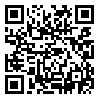Volume 6, Issue 1 (2004)
JAST 2004, 6(1): 11-19 |
Back to browse issues page
Abstract: (5030 Views)
There are two reasons for measuring the mechanical properties of cereal grains. First, the possibility of grain classification based on texture and, second, to obtain information for modification in the design of post-harvest machinery. In both cases, the objectives will be the reduction of qualitative and/or quantitative losses of grain. In this research, eight different parameters obtainable from the force-deformation curves of wheat kernels un-der compression were determined. The most important of these included: the apparent modulus of elasticity, maximum compressive contact stress and maximum load at rup-ture. Other grain characteristics such as the dimensions of single wheat kernels and the particle size index of bulk samples for five varieties of wheat were measured. By per-forming 200 uniaxial compression tests on intact wheat kernels (from soft to very hard varieties), the values of modulus of elasticity ranging from 486 to 1631 MPa were deter-mined based on measurements according to the Hertz theory. Results indicated a simple linear relationship between grain hardness and mechanical properties, such as modulus of elasticity and deformation at the linear limit on the force-deformation curve, and physical attributes, such as grain mass and major diameter. Grain orientation had no significant effect on the dependent variables. Moisture content had a very significant effect on me-chanical properties. From the statistical analysis of the data (ANOVA and DMRT), it was found that it is possible to distinguish between soft and hard wheat kernels based on dif-ferent parameters obtainable from the force-deformation curve. Hence, any one of these parameters may be used as a suitable indicator for grain hardness determination.
Subject:
Agricultural Machinery
Received: 2010/02/8 | Accepted: 2010/02/8 | Published: 2010/02/8
Received: 2010/02/8 | Accepted: 2010/02/8 | Published: 2010/02/8
| Rights and permissions | |
 |
This work is licensed under a Creative Commons Attribution-NonCommercial 4.0 International License. |

